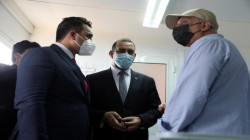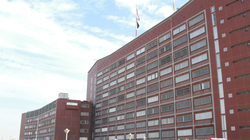Iraq Witnesses Major Demographic Shifts as Population Swells Beyond 43 Million Despite Fertility Rate Recession

Shafaq News/ Iraq's population has reached 43 million despite a downtrend in fertility rates in 2023, the Ministry of Planning revealed in a report issued on World Population Day.
The released data showed that the country's population count for 2023 stands at 43,324,000, with an annual demographic growth rate of 2.5%.
Males, according to the data, constitute 50.5% of the total population, while females account for the remaining 49.5%.
Approximately 40% of the population falls within the under-15 age bracket. The people aged between 15 and 64 form about 57% of the population. Meanwhile, the youth cadre, aged between 15 and 24, comprises around 28% of the population.
Nearly half of Iraq's populace is clustered in Baghdad, Nineveh, Basra, and Dhi Qar. An urban-rural dichotomy showed urban dwellers constituting a substantial 70% of the population, juxtaposed with a 30% rural inhabitant rate.
The bulletin shed light on a significant positive shift in infant and under-five child health parameters, marking a considerable reduction in mortality rates within this group, presently standing at fewer than 20 fatalities per 100,000 live births. This amelioration was mirrored in an enhanced life expectancy projection, now reaching 74 years.
The Ministry of Planning further revealed a declining trend in fertility rates, marking a decline from 3.66 in 2018 to a slightly lower 3.3 births per woman aged between 15 and 49 years by 2022.
The ministry projected that the nation stands on the cusp of the fourth stage of demographic transitions, signaling an impending phase colloquially dubbed the 'demographic gift'.
This phase is characterized by a shift in fertility rates to a replacement level and a concurrent decline in the proportion of dependents against a surge in the working-age population bracket.





